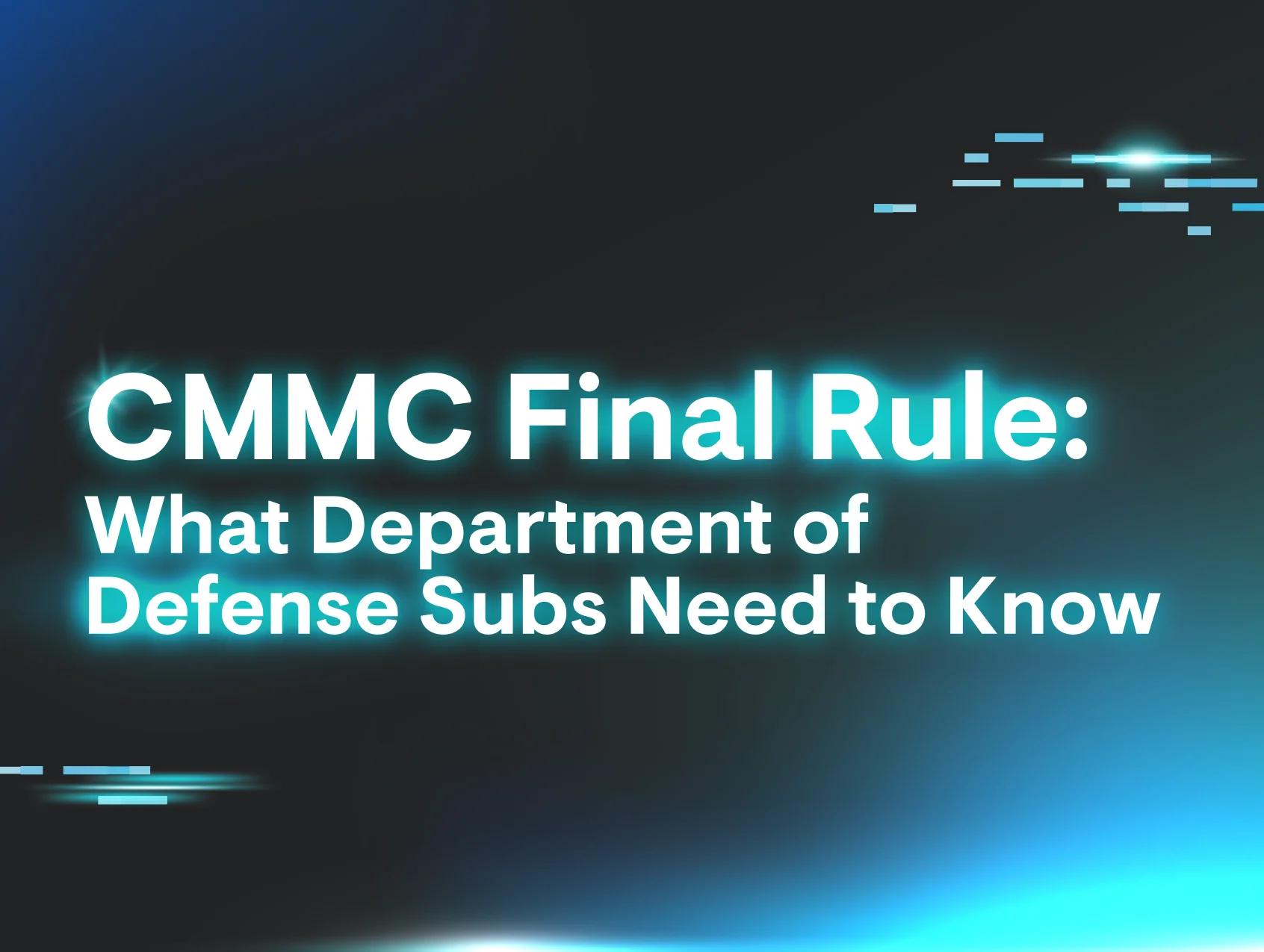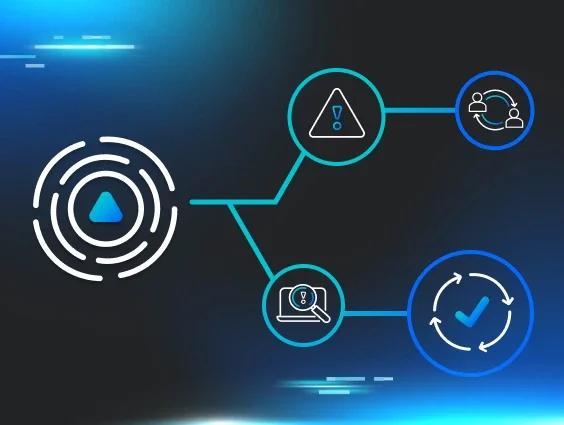Layered security isn't a new concept, but the way we think about it needs a serious update. Many organizations understand the importance of cybersecurity, yet they often struggle to design and implement a security stack that can stand up to the threats of today, let alone tomorrow.
Before joining Huntress as a Security Engineer, I spent nearly two decades in the Managed Service Provider space, designing and building secure networks for clients. Now, I speak with countless Managed Service Providers and IT teams about evolving their security stacks. A common theme has emerged: most security stacks are lacking not because of a lack of thought, but because of a dated view of what layered security truly means.
So, what should a modern security stack look like as we approach 2026? It’s more than just a firewall and antivirus.
What's a Modern Cybersecurity Stack?
A modern cybersecurity stack combines layered technologies, processes, and people to protect against today’s evolving threats—especially ransomware, phishing, and identity-based attacks. The right stack balances prevention, detection, response, and recovery, with coverage across endpoints, identities, networks, and cloud environments.
Watch our on-demand webinar: Cyber Stack Review: What Should Be In Your Stack?
Let's break down the nine critical layers you need to build a resilient and modern defense.
1. Foundation: security hygiene & hardening
This is your ground floor. Before you add any fancy tools, you must get the basics right. Strong security hygiene makes your organization a much harder target for attackers.
Asset management: You can't protect what you don't know you have. Maintain a complete inventory of all hardware, software, and data.
Patch management: Unpatched vulnerabilities are an open invitation for attackers. Automate patching for operating systems and third-party applications to close these gaps quickly.
Configuration hardening: Implement secure configurations for all systems. Disable unnecessary ports and services, and enforce strong password policies.
2. Endpoint security & detection
Your endpoints (laptops, servers, mobile devices) are on the front lines. Yesterday's antivirus software is no longer enough to stop modern threats.
Next-Gen Antivirus (NGAV): Uses AI and machine learning to block malware and fileless attacks that traditional AV misses.
Endpoint detection and response (EDR): Provides deep visibility into endpoint activity, allowing you to detect, investigate, and respond to threats that bypass preventive measures.
3. Identity & access protection
Cybercriminals love to steal credentials. Why break down the door when you can walk right in with a stolen key? Protecting identities is non-negotiable.
Multi-Factor Authentication (MFA): This is one of the single most effective security controls you can implement. Enforce MFA everywhere possible.
Privileged Access Management (PAM): Control and monitor access for privileged accounts (like administrators) to limit the damage a compromised account can cause.
Identity Threat Detection and Response (ITDR): Focuses on detecting and responding to threats specifically targeting identities, like unusual login attempts or privilege escalations.
4. Cloud & SaaS security
As your organization moves to the cloud, your security stack must follow. Protecting data in platforms like Microsoft 365, Google Workspace, and AWS requires dedicated tools.
Cloud Access Security Broker (CASB): Provides visibility and control over how your cloud services are used, enforcing security policies for SaaS applications.
SaaS Backup: Don't assume your SaaS provider has your back. Implement a third-party backup solution for critical data in applications like Microsoft 365.
5. Embracing AI securely
AI is transforming business, but it also introduces new risks. You need to enable your teams to use AI productively while managing the security implications.
AI Usage Policies: Establish clear guidelines on what data can be used with public AI models and which tools are approved.
Data Loss Prevention (DLP): Implement DLP tools that can detect and block sensitive information from being shared with AI platforms.
6. Network & email security
The network perimeter and email inbox remain primary attack vectors for phishing and malware delivery.
Next-Generation Firewall (NGFW): Provides advanced threat prevention, including intrusion prevention systems (IPS) and application control.
Secure email gateway: Filters out spam, phishing emails, and malicious attachments before they reach your users' inboxes.
DNS filtering: Blocks access to known malicious websites, preventing users from connecting to phishing sites or command-and-control servers.
7. Monitoring, automation & response
You can't respond to a threat you can't see. Continuous monitoring and rapid response are critical for minimizing the impact of a breach.
Security Information and Event Management (SIEM): Centralizes log data from across your environment, enabling threat detection and compliance reporting.
Managed Detection and Response (MDR): For teams without a 24/7 Security Operations Center (SOC), an EDR service provides the human expertise to monitor alerts, hunt for threats, and guide response efforts.
8. Backup, recovery & business continuity
Prevention is ideal, but recovery is essential. When an incident like a ransomware attack occurs, your ability to recover quickly determines the impact on your business.
Immutable Backups: Ensure you have recent, tested backups that are stored offline or are immutable, meaning they can't be altered or deleted by attackers.
Disaster Recovery (DR) Plan: Have a documented and tested plan to restore critical systems and data after an incident.
9. Governance, Risk & Compliance (GRC)
GRC provides the framework that holds your security program together. It ensures your security efforts align with business objectives and meet regulatory requirements.
Security Awareness Training: Your employees are your first line of defense. Train them to recognize and report phishing and other threats.
Risk Assessments: Regularly assess your cybersecurity risks to prioritize your security investments and efforts effectively.
Recommended Reading: Choosing the Right EDR: Managed vs. Unmanaged
Build your security stack with Huntress
Building a comprehensive, modern security stack from scratch can be daunting. It requires expertise, time, and resources that many internal IT teams and MSPs simply don't have.
That's where Huntress comes in. We provide the critical technology and human expertise needed to protect your most vulnerable attack surfaces. TheHuntress Managed Security Platform delivers a powerful, layered defense that simplifies your stack and elevates your security posture.
Managed EDR: We protect your endpoints with 24/7 monitoring from our human-led SOC. We don't just send you alerts. We investigate them, provide context, and give you step-by-step remediation guidance.
Identity Threat Detection: We monitor identity systems like Active Directory and Microsoft Entra ID to detect suspicious behavior and stop identity-based attacks in their tracks.
Managed SIEM: Enterprise-grade SIEM provides 24/7 monitoring to help detect, investigate, and hunt threats.
Security Awareness Training: We turn your users into a defensive asset with engaging, automated training that teaches them how to spot and report real-world threats.
To combat getting overwhelmed or derailed by the sheer amount of options, seek advice from trusted advisors, or talk to other companies or peer groups about what they are doing with their stacks to find the right stack for your organization. You should also use things like the NIST and ATT&CK frameworks to navigate the path and take action on the areas that matter most.
We no longer live in a world where security can take a back seat or be put on hold. It must become a priority in all organizations—one that you have to be willing to fight for.
If there’s one piece of advice I can leave you with, it’s this: When hackers come hacking, don’t be caught without a proper security stack and plan in place.
Frequently Asked Questions
1. Which parts of the stack are most commonly under-resourced or neglected?
Many organizations underestimate the importance of detection and response capabilities within their cybersecurity stack. A lack of robust tools in these areas can leave gaps where threats go unnoticed, and without a swift response plan, incidents can quickly escalate. Proper investment in threat detection and incident response mechanisms is crucial to building a resilient environment.
2. What are the critical functional layers in the stack?
The critical layers of any cybersecurity stack, often aligned with the NIST Cybersecurity Framework, include:
Identify: Knowing your assets, risks, and vulnerabilities.
Protect: Implementing safeguards to prevent attacks, such as firewalls and encryption.
Detect: Monitoring networks to discover anomalies or breaches.
Respond: Taking steps to contain and neutralize threats.
Recover: Ensuring business continuity and restoring systems after an incident.
3. What criteria should I use to evaluate a tool for inclusion in my stack?
Tools should be evaluated based on their ability to:
Be proactive (preventing threats) versus merely reactive (addressing issues after they occur).
Provide robust intelligence capabilities, such as AI-driven threat detection.
Ensure scalability to grow alongside your business needs.
Offer strong interoperability, seamlessly integrating with existing tools and frameworks.
4. How do I know my cybersecurity stack actually works in the event of a breach?
Regular testing and validation are essential. This can be achieved through methods like penetration testing, breach simulations, and ongoing audits. Additionally, leveraging frameworks such as MITRE ATT&CK® can help identify gaps and assess the effectiveness of specific tools or approaches.
5. Where are the most common gaps in current stacks?
Detection and response functions often suffer in under-resourced or outdated stacks. Many organizations also overlook the importance of security awareness training for employees, leaving them vulnerable to phishing and other social engineering attacks.
6. How does the stack align with frameworks such as NIST Cybersecurity Framework or MITRE ATT&CK® Framework?
Alignment with these frameworks ensures a robust and comprehensive approach to cybersecurity. For instance, the NIST Framework offers a clear roadmap to cover all functional layers, while the ATT&CK® Framework provides detailed adversary tactics and techniques, allowing organizations to better map out detection and response workflows.
7. How should the stack scale and adapt as the business or threat landscape changes?
A strong cybersecurity stack should be designed with flexibility and scalability in mind. This involves leveraging tools that can adapt to increased network demands, integrating threat intelligence that evolves with emerging threats, and routinely reassessing the stack to address new vulnerabilities and business milestones. Proactively planning for growth ensures long-term resilience.

















